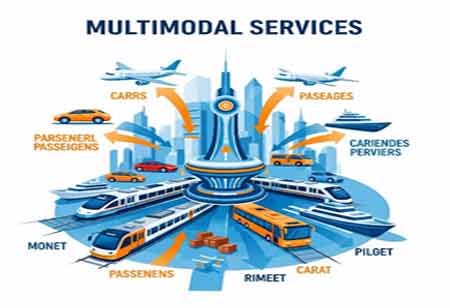One of the standout advantages of multimodal transportation is its potential for cost reduction. By combining transport methods like rail and trucking, businesses can optimize their routes, minimizing delays and avoiding bottlenecks. For instance, using rail for long distances can significantly reduce fuel expenses compared to relying solely on trucks. Additionally, businesses can balance cost and speed by utilizing sea freight for international shipments and air transport for urgent deliveries. This strategic blend of transport options not only enhances efficiency but also improves the bottom line.
Enhanced Flexibility and Coverage
Multimodal transport also provides businesses with flexibility in route planning and delivery schedules. When unexpected delays occur in one mode of transport, alternatives are readily available to ensure timely delivery. This flexibility is especially beneficial for companies that rely on just-in-time inventory systems or those with urgent delivery requirements.
Passengers can also enjoy better coverage through multimodal systems. Combining modes such as trains, buses, and even shared scooters allows users to travel more efficiently than if they were limited to a single transport method. For instance, a passenger might take a train to reach a bus terminal and then hop on a scooter to reach their final destination, creating a seamless travel experience.
Promoting Sustainability and Efficiency
As environmental concerns become more pressing, multimodal transportation offers significant ecological benefits. Each transport mode has different energy efficiency profiles, and by selecting the most environmentally friendly options, we can significantly reduce carbon emissions. For example, choosing rail transport for long-haul freight instead of road transport can lead to substantial decreases in greenhouse gas emissions.
Moreover, multimodal systems encourage the adoption of cleaner energy technologies, such as electric vehicles and hybrid buses, promoting a shift away from fossil fuels. In urban settings, multimodal transportation helps alleviate traffic congestion by incorporating public transit, cycling, and pedestrian pathways.
When cities design transportation networks that encourage a blend of these modes, residents are more likely to forgo private vehicle usage, resulting in less traffic and improved quality of life. Multimodal transportation not only optimizes the existing infrastructure and reduces environmental impact but also enhances flexibility and overall efficiency, making it a pivotal strategy for the future of transport and logistics.










